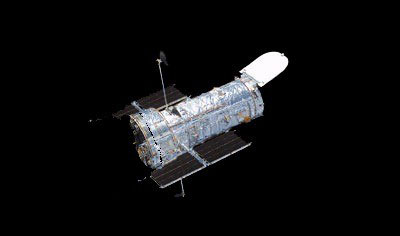In defense of the beleaguered spysatby Dwayne A. Day
|
| One popular myth among journalists is the allegation that the United States spends too much energy and money on imagery intelligence and too little energy and money on human intelligence, and that the former is to blame for the latter. |
Philip Taubman, the Washington bureau chief for the New York Times, made this claim in his book Secret Empire, on early satellite reconnaissance. Ronald Kessler, in his book The CIA at War, also claimed that certain information could only be gained by human sources and that the CIA had placed too much emphasis on technical collection systems. It was also voiced by a former CIA agent in the BBC radio program “Spies R Us: A History of the CIA.”. It is often a throwaway line in television reports about the future of intelligence collection and regularly appears in the pages of Time and Newsweek and elsewhere, usually as part of a larger debate about why American intelligence agencies are allegedly so bad at collecting intelligence. The primary thrust of this viewpoint is that intelligence agencies need more human sources and not so many satellites, and that the satellites may even to be to blame for the sorry state of human intelligence.
But the current controversy over the intelligence failures of 9-11 and weapons of mass destruction in Iraq have highlighted the fact that human intelligence is not only unreliable, but also extremely difficult. Now that investigative journalists have turned their attention to what went wrong, and how human sources mislead the CIA, perhaps they will reexamine the myth that satellite intelligence is increasingly irrelevant in the twenty-first century.
Myth versus reality
The allegation that the U.S. spends too much energy and money on technical assets in general and spy satellites in particular is one of many journalistic myths about intelligence. Like many of those other myths, it is essentially a result of reporters trying to simplify a complicated subject and ultimately losing perspective.
The claim of overreliance on satellites fails on several accounts. First, it downplays the tremendous past and current importance of satellite reconnaissance in gathering basic intelligence. Before the dawn of satellite reconnaissance in August 1960, CIA estimates on Soviet military capabilities were filled with caveats and equivocations. Even the successful recruiting of spies like Oleg Penkovsky had left massive gaps in American knowledge about what the Soviets were capable of doing, let alone what they intended to do. But only a short time after the satellites began returning their pictures, one high-ranking intelligence official looked at the latest, much thicker National Intelligence Estimate on Soviet strategic weapons, where precise numbers had replaced murky estimates for how many bombs, planes and ICBMs the Soviets had built, and remarked “this isn’t an estimate, it’s a fact book!” Satellite reconnaissance had revolutionized intelligence collection and contributed greatly to superpower stability, a fact that is still little recognized by journalists and most Cold War historians.
| Satellite reconnaissance had revolutionized intelligence collection and contributed greatly to superpower stability, a fact that is still little recognized by journalists and most Cold War historians. |
Although terrorists are not as easy to locate via satellite as many Cold War targets, the reality is that the United States still faces other adversaries who operate in more traditional ways, and satellites are highly useful at providing information on their actions. When North Korea reactivated its nuclear reactor, the heat plumes were detected by satellite. When the United States invaded Iraq, the locations of fixed and mobile Iraqi forces were pinpointed by satellite. Signals intelligence satellites can still snare the whispers of cell phone conversations and radar emissions. Even when analysts cannot crack encoded communications intercepted by satellite, sometimes merely noting the location of the emitter is significant. All of this information feeds into assembly of the big intelligence picture and often the problem is that there is too much information coming from these sources. But for all their cost, the satellites certainly pull their weight, and increasingly serve military customers that they could not serve only a decade or two ago.
In addition, their critics also misunderstand the limitations of satellite intelligence. One common claim is that satellites cannot indicate intentions. They cannot see inside the mind of a foreign leader. But this is not entirely accurate, and it is based upon the somewhat dubious assumption that there is any intelligence source that can accurately predict an adversary’s intentions.
In 1968 a satellite photographed Soviet tanks on the border of Czechoslovakia. The Red Army had painted invasion stripes on the side of the tanks so they could be differentiated from similar Czech tanks, a clear indication that the Soviets were going to roll across the border. Unfortunately, the limited technology of the day resulted in the pictures reaching the intelligence community only after the invasion had taken place. Before Saddam Hussein’s invasion of Kuwait in 1991 satellites revealed that his generals had deployed fuel supplies close to the Kuwaiti border, a clear indication that he was about to invade, because there was no other reason to put fuel supplies for Iraqi forces so close to the border unless that border would soon become the support area for advancing troops.
